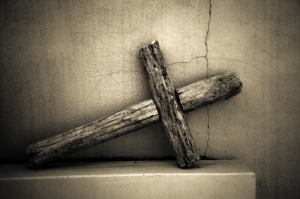 Scripture displays a dance between the pronounced attributes of God. At least, it appears as a dance to our small eyes, capable of beholding only one thing at a time.
Scripture displays a dance between the pronounced attributes of God. At least, it appears as a dance to our small eyes, capable of beholding only one thing at a time.
Straining to Step
God’s character is a primary example: He is just as only a Being of burning holiness can be, yet He is kind as only a Being of furious love can exhibit. Our reach and rhythm find the steps of this dance greatly stretching. How can He be both?
While all of us discover God in real-time, the fact was even more pronounced for Abraham. No Scriptures to study, no preaching to process, he was discovering the substance of Yahweh solely as Yahweh revealed Himself.
The Sodom Study
On the outskirts of Sodom, a city reputed for its wickedness, God revealed to Abraham a side different from the kindness and guidance that had thus far characterized God’s tone. God’s holy justice had determined that Sodom’s time had arrived. The Consuming Fire was about to swallow an entire city.
Abraham proceeded to open negotiations with the Almighty, by “drawing near” and querying, “Will you indeed sweep away the righteous with the wicked?” (Gen 18:23)
 He wanted to know how God ticked. Was His sense of justice so tightly wound that it would override what Abraham considered to be reasonable, percentage-based standards of grace?
He wanted to know how God ticked. Was His sense of justice so tightly wound that it would override what Abraham considered to be reasonable, percentage-based standards of grace?
“Will you then sweep away the place and not spare it for the fifty righteous who are in it?”
And on the auction went, with Abraham bowing out of the bidding once Yahweh had agreed that He would spare the entire city if He found ten righteous people.
The Twist
Abraham was concerned that God’s holy justice burned so hot that an innocent few might suffer alongside the guilty masses. But Yahweh flips it over and reveals that He is actually so gracious toward His faithful ones that He will allow rampant sin to go unpunished.
Said another way, Abraham feared that God was a sniper so eager to pull the trigger that innocent victims would be struck down. God displays a shocking willingness to let evil have its day in exchange for the safety of His people.
Abraham Would Wear a Cross
 If Abraham were alive today, he would wear a cross around his neck. He would have to. What other ornament can even begin to capture this concept, this intimate interaction of perfect justice tempered by lavish love?
If Abraham were alive today, he would wear a cross around his neck. He would have to. What other ornament can even begin to capture this concept, this intimate interaction of perfect justice tempered by lavish love?
Jesus’ disciples approached from the opposite road to Abraham; they were eager to see fireworks. Let Rome burn! Smite the Samaritans! Humble Herod! Bring the biggest cup you have, and pour down the judgment.
And God obliges.
In fact, He brings a larger vessel of venom than they could have imagined. His view encompasses the collective evil of humanity back to Eden. Horror movies and nightmares could not compete with the content of that cup.
And He unloaded His appropriated anger, dropping it like an atom bomb on a cross-beamed and convicted criminal. Then He dared to tell us that love was at the center of the carnage–grace at its gutsiest. Oh to be sure, there would be justice, swift and sweeping. Every evil would be exorcised, and wailing would ensue. But the entire execution of justice would serve as a stay of execution for the guilty.
Jesus paid it all.
All to him I owe.
Sin had left a crimson stain.
He washed it white as snow.
No doubt in my mind, Abraham would have worn a cross. And as he wore it, he would have marveled. He might have recalled the most grievous days of his life, as he walked his son Isaac toward Mount Moriah. Willing to display his faithfulness to a God who appeared to making nonsensical requests, Abraham was pushed to the brink before a bleating broke the tension.
“God will provide for Himself the lamb for a burnt offering, my son.” Father had declared that to son. If Abraham were with us today, wearing that cross, he would stroke it as a treasure from another universe. And he would marvel at the prophetic nature of his Moriah-message.
Had Abraham’s sacrifice been carried out, it would have displayed his allegiance to an unseen Deity. But God’s son-sacrifice has been carried out, as an exhibition of His allegiance to people who lack all ability to dance with Him.




